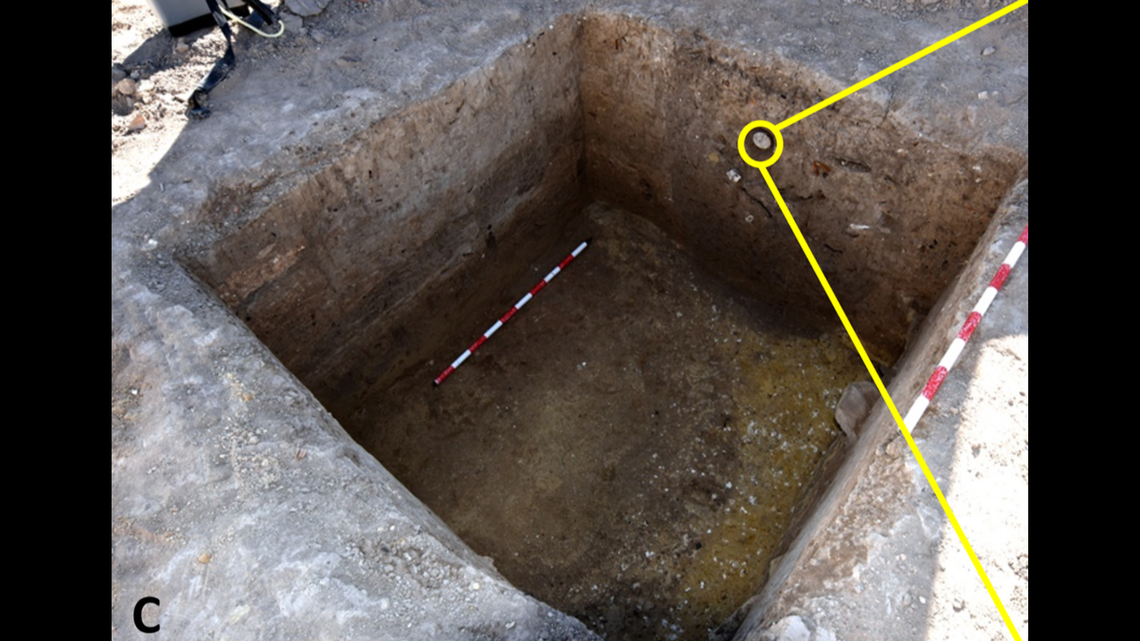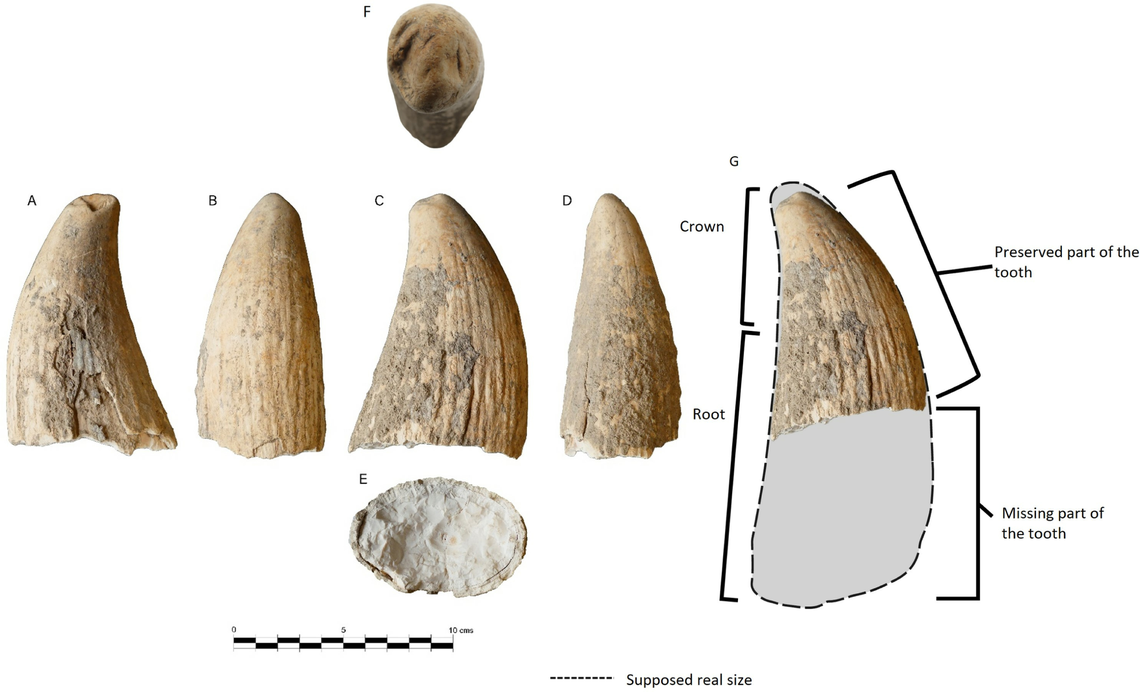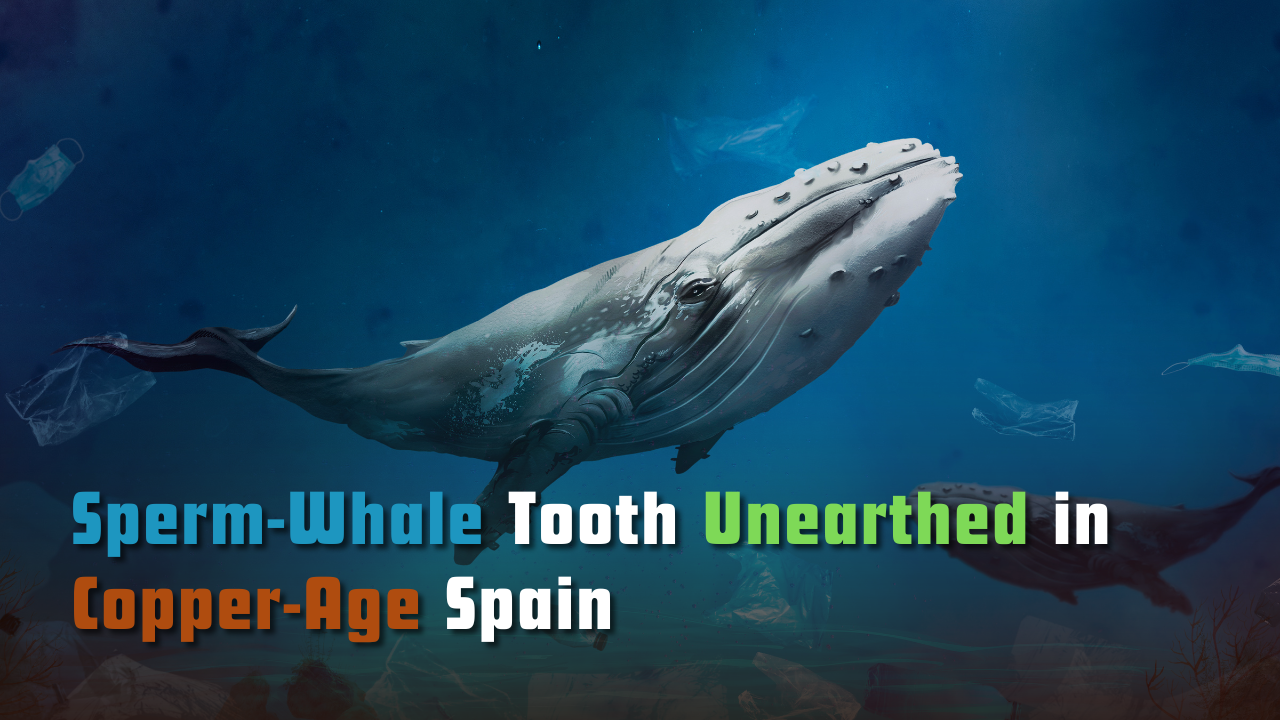A Sperm-Whale Tooth Unearthed in Copper-Age Spain
A whale tooth’s journey from the sea to a Copper Age pit

Context: In 2018, archaeologists excavating a new library site at Valencina de la Concepción in southwest Spain uncovered an half of a large sperm-whale tooth buried in a 4,000-year-old pit. This discovery is unique—no other sperm-whale teeth have been found in Copper-Age Iberia before.
Copper-Age Iberia refers to the period between roughly 3250 and 2200 BCE on the Iberian Peninsula (modern-day Spain and Portugal) when communities began using copper tools and ornaments alongside stone implements. This era, also known as the Chalcolithic or Eneolithic, marked a major cultural and technological shift from the Neolithic.
Unravelling the Tooth’s Journey
- The tooth was analysed extensively using advanced imaging techniques, including overlapping photography to build a 3D model and digital microscopy to examine surface scratches, drill holes, and tiny biological borings.
- Four types of small tunnels and grooves were identified, caused by sponges, marine worms, grazing snails, and burrowing barnacles.
- Bite marks from sharks were also mapped, indicating the tooth originated from a sperm whale carcass scavenged on the seabed.
- The tooth’s root shape and enamel characteristics matched those of contemporary adult sperm whales, estimated to be 20–25 cm in length.

Timeline and Environmental History
- Radiocarbon dating of animal bones and pottery from the pit indicated it was dug around 2500-2400 BC.
- After the whale’s death, the tooth rested on the seabed long enough to be colonised by marine organisms and scavenged by sharks.
- Ocean currents rolled and partially buried the tooth in sand before a storm or high tide eventually washed it ashore.
- While buried in beach sand, plant roots etched channels on the tooth, and a limestone crust formed on its surface.
Human Use and Cultural Significance
- Copper-Age humans likely collected the tooth due to its exotic nature and value.
- Evidence shows they pressed chisels or awls into its broken edge, possibly to fashion ornaments.
- The tooth was placed in a pit about one meter wide and deep, along with broken pottery, stone tools, and animal bones.
- The absence of human remains led archaeologists to interpret the pit as a “structured deposition”—a deliberate act of removing precious objects from daily use.
Broader Archaeological Importance
- This tooth is the only sperm-whale tooth found in Copper-Age Spain and just the second in the Western Mediterranean from this period.
- Its discovery broadens the known range of rare and prized materials at Valencina, which included elephant ivory, ostrich eggshells, and rock crystals.
- The burial demonstrates that coastal objects, even from massive sea creatures never seen alive by inland communities, held symbolic and cultural importance for predominantly farming societies.
Subscribe to our Youtube Channel for more Valuable Content – TheStudyias
Download the App to Subscribe to our Courses – Thestudyias
The Source’s Authority and Ownership of the Article is Claimed By THE STUDY IAS BY MANIKANT SINGH


